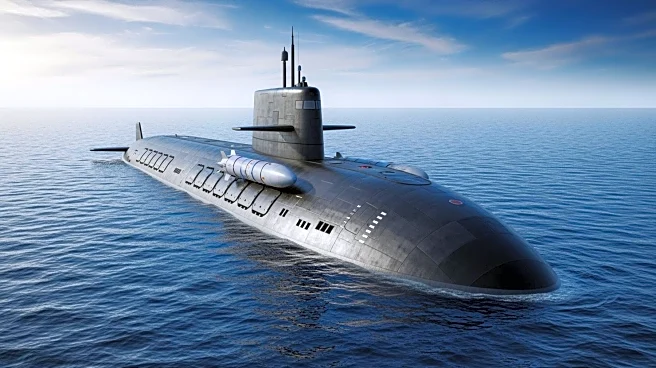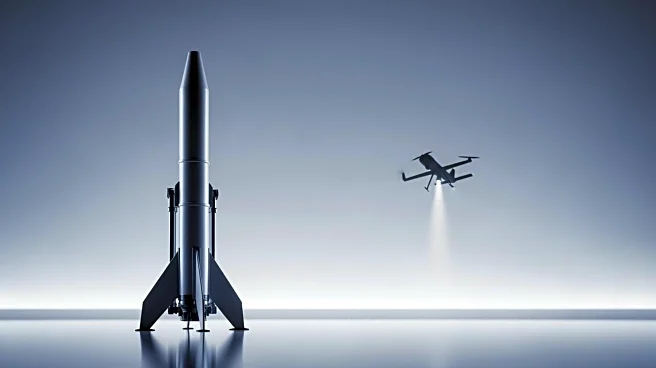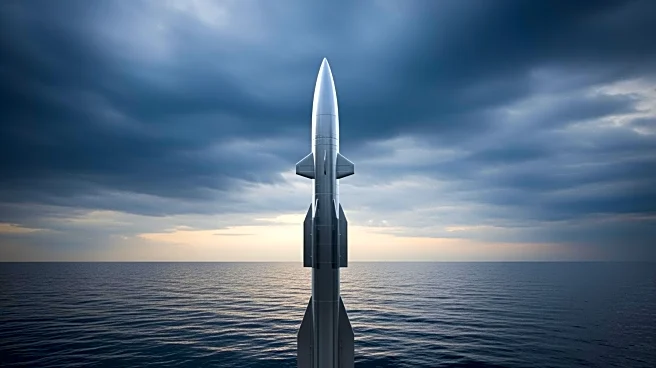What's Happening?
South Korea has launched its first 3,600-ton KSS-III Batch-II-class diesel-electric attack submarine, named ROKS Jang Yeong-sil, at Hanwha Ocean's dockyard in Geoje. This development comes in response to North Korea's ongoing nuclear and missile advancements,
which have been reportedly supported by Russia. The submarine is equipped with advanced detection and strike capabilities, including six torpedo tubes and 10 vertical launching system cells for firing Hyunmoo-IV-4 ballistic missiles. The launch is part of South Korea's 'three-axis system' strategy, aimed at providing preemptive and retaliatory strike options against North Korea and defending against air and missile threats.
Why It's Important?
The launch of the ROKS Jang Yeong-sil represents a significant enhancement in South Korea's maritime defense capabilities, particularly in the context of rising tensions with North Korea. The submarine's advanced features, such as lithium-ion batteries for extended deployment and high-speed maneuvers, reduce the risk of detection and increase its strategic value. This move is crucial for maintaining regional security and deterring potential threats from North Korea, which has showcased nuclear-armed missiles capable of striking the U.S. The development also highlights South Korea's growing defense industry and its potential impact on global security dynamics.
What's Next?
The ROKS Jang Yeong-sil will undergo trials before its scheduled delivery to the navy at the end of 2027. South Korea may further expand its submarine fleet to strengthen its preemptive and retaliatory strike capabilities against North Korea. Additionally, Hanwha Ocean's selection by the Canadian government for its submarine project indicates potential international collaborations and defense exports, which could influence global maritime security strategies.















